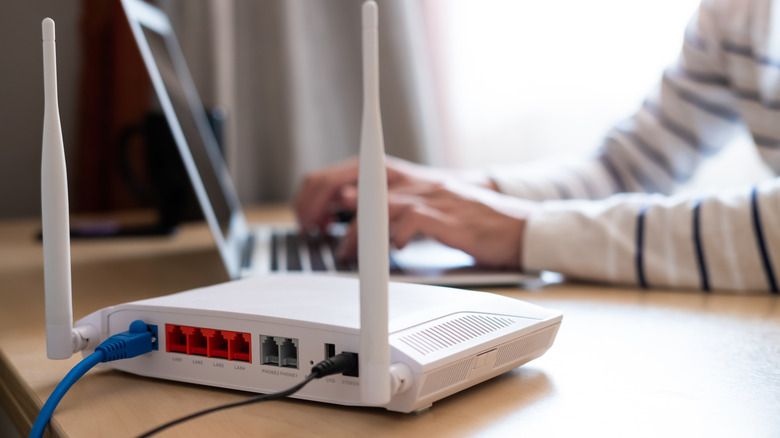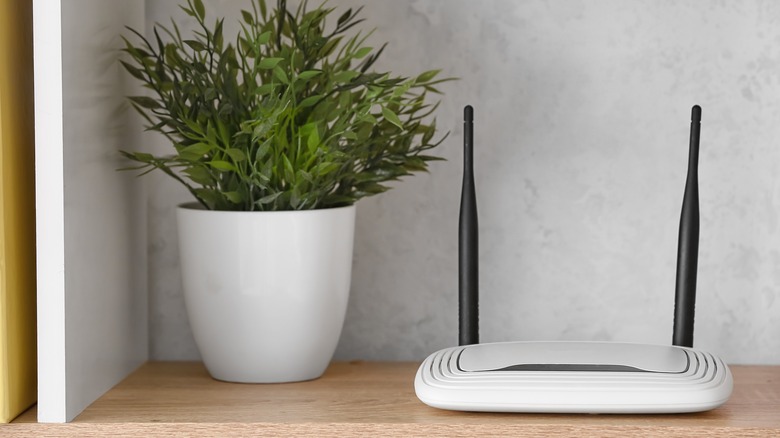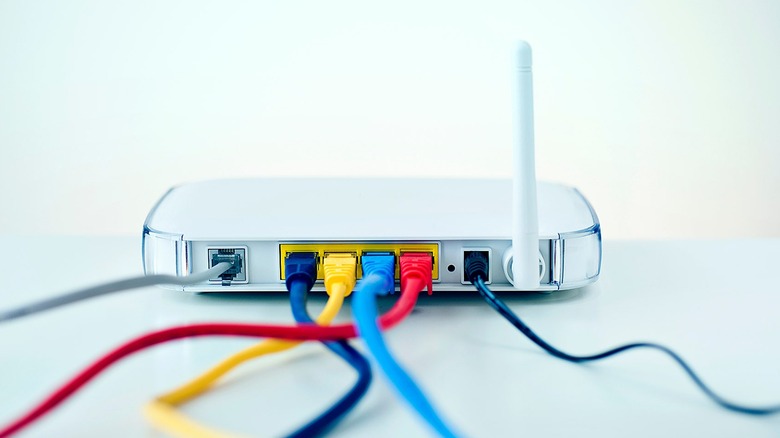Here's Why You Might Want To Reboot Your Router
Often forgotten about until it stops working, a wireless router, also called a Wi-Fi router, combines the functions of both a wireless access point and a traditional router. Even though wireless routers usually have several Local Area Network (LAN) ports to physically connect devices to an Internet modem, those are typically eschewed in favor of a wireless connection. In a way, routers are like small computers, with a CPU and memory to handle incoming and outgoing data.
But sometime it seems like the Internet starts to get sluggish or occasionally stalls altogether. When that happens, the go-to remedy is to unplug the wireless router, slowly count to 10, then plug it back in. This process of rebooting a wireless router, also known as "power cycling," is the most common troubleshooting method for connectivity gremlins. But what you might not know is that this rebooting ritual is a healthy event that should be performed regularly, not just when there's a problem.
Rebooting a router can fix many internet issues
First and foremost, rebooting a router periodically is essential for maintaining Internet speed. If your router doesn't have an up-to-date public IP address or two devices on your network have the same IP address, which is known as an IP address conflict, your connection will become slow. The same thing can happen if too many superfluous devices are connected to your router. Restarting the router resets these IP assignments.
But restarting your router is about more than just a fast connection for streaming Netflix. It can also protect you from being hacked. In 2018, hackers used a malware called VPNFilter to exploit routers all over the world and collect sensitive information. Consequently, the FBI recommended that all homes and small businesses reboot their routers to temporarily disrupt the malware.
So what's behind the 10 second delay to power a router back up? Like most modern electronics, routers use capacitors in their circuitry. Capacitors store a small electrical charge, almost like a tiny battery. Granted, they don't store a ton of energy, but it can be enough to keep a memory chip running for a few seconds. By waiting at least 10 seconds after disconnecting power from the router, you ensure that every last bit of RAM is cleared during the reboot process.
The difference between rebooting and resetting a router
If all else fails, and rebooting your router isn't solving your issue, you can perform a factory reset. Although reboot and reset might sound similar, they aren't. Rebooting, or power cycling, can be done as often as necessary or as a preemptive measure, as recommended above. But when you reset a device, you restore it to like-new settings — the state it came in when it was purchased. This means that any customizations, passwords, or software updates will be erased.
Resetting can be helpful, but it should only be used as a last resort if you're troubleshooting, and reboots aren't working, or in cases where a username or password is forgotten. Reset buttons can generally be found on the back of the device and must be pressed with a paperclip or other small item and/or held down for a certain period of time to prevent accidental activation.


